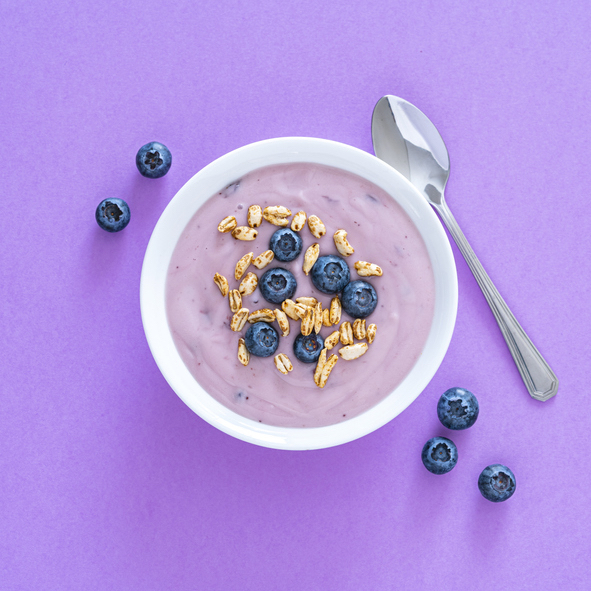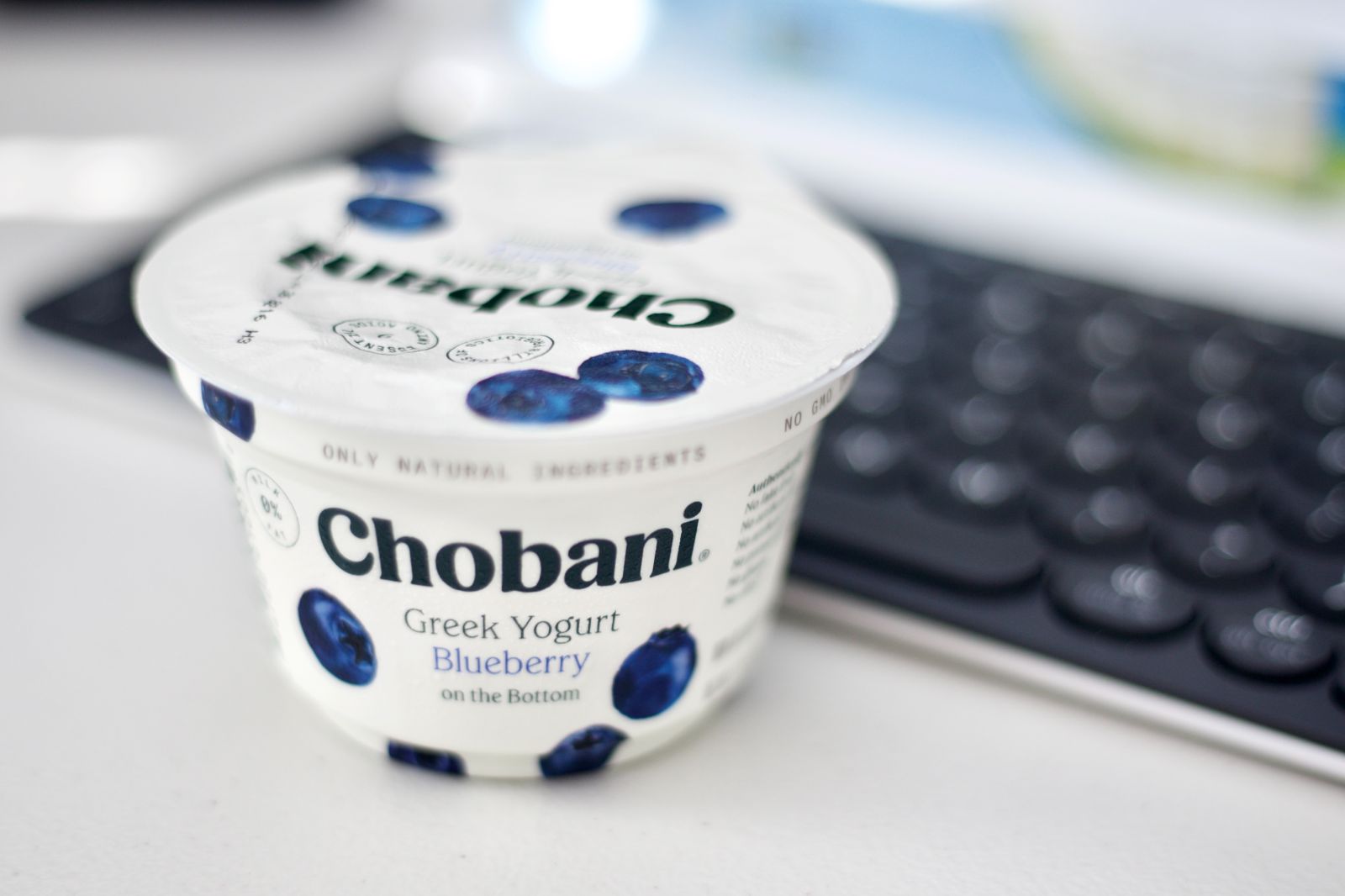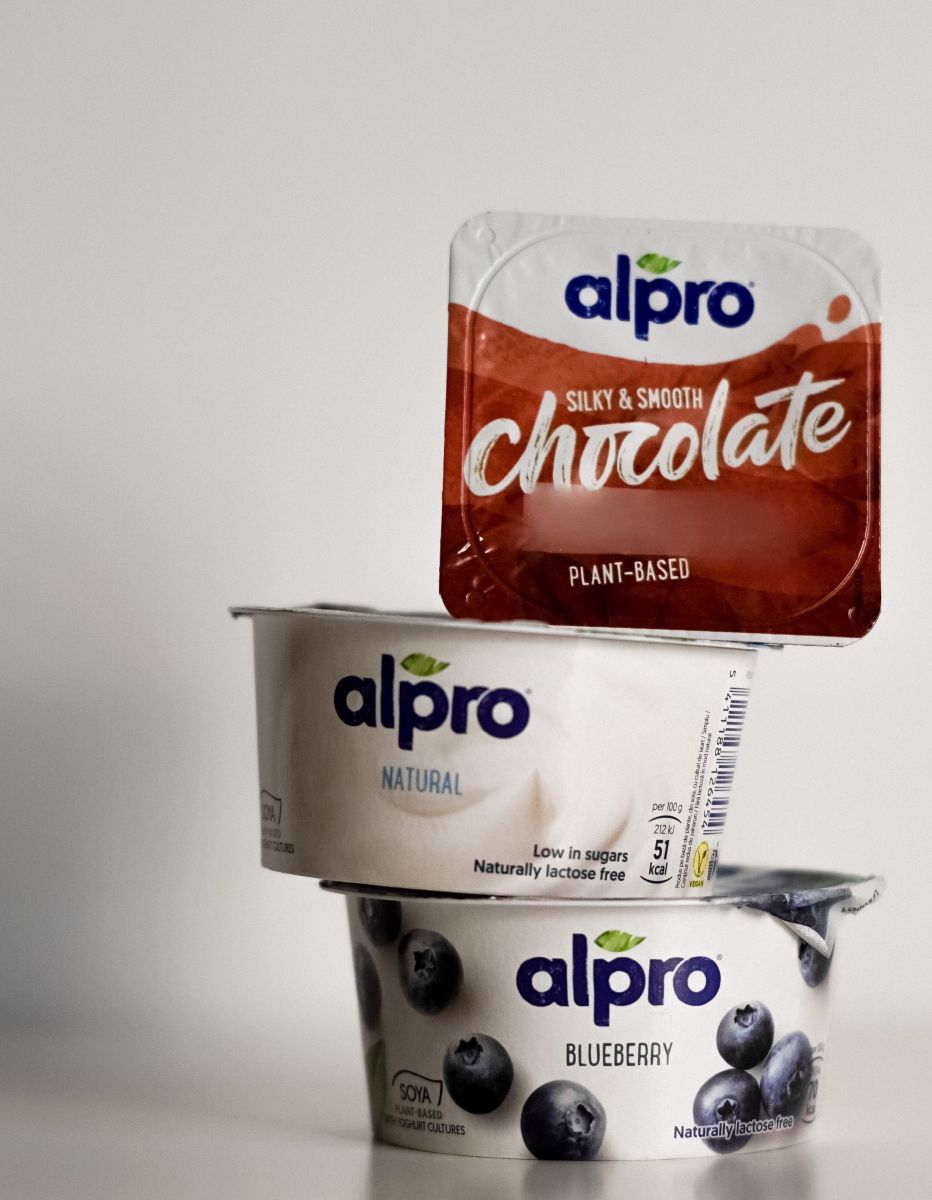Which Yogurt Is Best for People With Diabetes?
By Constance Brown-Riggs
 With so many varieties of yogurt – French, Greek, kefir, and plant-based – it can be hard to know which ones are the best for someone with diabetes.
With so many varieties of yogurt – French, Greek, kefir, and plant-based – it can be hard to know which ones are the best for someone with diabetes.
Have you walked down the dairy aisle recently? Yogurt seems to have taken over the shelves. There’s French, Greek, Icelandic, Australian, and “free-from” yogurts – GMO-free, dairy-free, preservative-free, and additive-free. Then there's yogurt in glass jars, drinkable yogurt in bottles, and squeezable yogurt. And somewhere, sandwiched in the middle, is gender-specific yogurt. If you’re feeling overwhelmed, you are not alone.
What is yogurt?
Simply put, yogurt is milk combined with bacteria. To make yogurt, milk is heated and cooled, then the bacteria cultures Streptococcus thermophilus and Lactobacillus bulgaricus are added.
The mixture is left to ferment for four to seven hours at a warm temperature. During the fermentation process, the bacteria convert the sugar in milk, called lactose, to lactic acid, which thickens the milk, producing yogurt. Yogurt manufacturers may use other bacteria cultures for taste, texture, or probiotic (gut health) properties.
What are the health benefits from eating yogurt?
Yogurt is a nutrient-dense food providing vital nutrients for health, such as calcium, potassium, vitamin D, and protein. The Dietary Guidelines for Americans (DGA), recommends 2 to 2 ½ servings per day of dairy foods, such as yogurt. Recent evidence even shows that dairy foods such as yogurt may also lower the risk of type 2 diabetes, metabolic syndrome, heart disease, and obesity.
Many individuals miss out on the health benefits of dairy because of real or perceived lactose intolerance. The good news is yogurt can help individuals with lactose intolerance meet their recommended dairy intake and obtain critical nutrients. The starter cultures used to make yogurt, Streptococcus thermophilus and Lactobacillus bulgaricus, aid in lactose digestion in the intestinal tract and help people with lactose intolerance enjoy yogurt.
What are the different yogurt varieties?
You’ll find there's more variety than ever in the yogurt aisle in all areas, including flavor, style, and format. You’ll find custard, whipped, side-by-side cups with toppings, drinkable, and plant-based yogurt. The following summaries of the main yogurt varieties outline what makes each one unique.
Traditional yogurt
What is it? Traditional American-style yogurt is unstrained and made from whole, low-fat, or non-fat milk. Because it's unstrained, registered dietitian nutritionist Rahaf Al Bochi, owner of Olive Tree Nutrition and media spokesperson for the Academy of Nutrition and Dietetics, says it's lower in protein compared with strained varieties such as Greek yogurt. Traditional yogurt has a smooth and creamy texture.
Popular brands: Yoplait, Stonyfield, and Dannon.
Nutrition information: One 3/4 cup (6 ounces) of Dannon plain yogurt contains 80 kcal; 0 g fat; 0 g sat fat; 13 g carbohydrate; 10 g sugars; 0 g added sugars; and 8 g protein.
Common ingredients: (Dannon) Cultured Grade A non-fat milk, food starch, and active yogurt cultures, including L.Acidophilus.
 Greek yogurt
Greek yogurt
What it is: Greek yogurt is a thick, creamy yogurt. Registered dietitian nutritionist Russender Powell, owner of The Nutrition Lady, says Greek yogurt is thicker and higher in protein because it is strained to remove the liquid and whey. As a result, most Greek yogurts have twice the protein of regular low-fat yogurt. You’ll find full-fat, low-fat, and fat-free (nonfat) Greek yogurt in the dairy aisle.
Popular brands: Chobani, Fage, and Dannon Oikos.
Nutrition information: One 3/4 cup (6 ounces) of Dannon Oikos plain Greek yogurt contains 100 kcal; 0 g fat; 0 g sat fat; 7 g carbohydrate; 7 g sugars; 0 g added sugars; and 18 g protein.
Common ingredients (Dannon Oikos): Cultured Grade A milk and active yogurt cultures.
Icelandic yogurt
What it is: Icelandic yogurt, also known as skyr, is a strained yogurt that's creamier and thicker than Greek yogurt. In fact, it takes almost four cups of milk to make one cup of Icelandic yogurt, which is why it contains more protein than regular yogurts.
Popular brands: Smári, Ísey Skyr, and siggi's.
Nutrition information: One ¾ (5.3-oz) cup of siggi's plain skyr yogurt contains 100 kcal; 0 g fat; 0 g sat fat; 7 g carbs; 5 g sugars; 0 g added sugars; and 19 g protein.
Common ingredients (siggi's): Pasteurized skim milk, live and active cultures (S. thermophilus, L. delbrueckii subsp. bulgaricus, B. lactis, L. acidophilus, L. delbrueckii subsp. Lactis).
Australian yogurt
What it is:"Australian yogurt is unstrained. It's made with whole milk and typically sweetened with honey. It has a velvety, creamy texture and has been described as in between Greek-style and traditional-style yogurts. It's lower in protein than Greek yogurt but higher than traditional yogurt," Al Bochi says.
Popular brands: Noosa and Wallaby.
Nutrition information: One ¾ (5.3-oz) cup of Wallaby plain yogurt contains 160 kcal; 8 g fat; 5 g sat fat; 8 g carbohydrate; 5 g sugars; 0 g added sugars; and 15 g protein.
Common ingredients (Wallaby): Cultured Pasteurized whole organic milk, live active cultures (L. acidophilus, L. bulgaricus, S. thermophilus, Bifidus, and L. Paracasei).
French yogurt
What it is: “Similar to Australian, French-style yogurt is unstrained full fat yogurt which makes it just as creamy as Greek or Icelandic options,” says Powell. However, French yogurt has less protein than Greek and sometimes contains more sugar. Each serving of French-style yogurt is individually made in the same container or glass jar it is sold in. Typically, yogurt is produced in large vats and then divided into containers.
Popular brands: Oui by Yoplait, la fermière, and St. Benoit.
Nutrition information: One 5.6-oz (160 g) container of la fermière plain yogurt contains 160 kcal; 13 g total fat; 8 g sat fat; 7 g carbohydrate; 7 g sugars; 0 g added sugars; and 5 g protein.
Common ingredients (la fermière): Grade A Pasteurized Whole Milk. Grade A Pasteurized Cream, Live Active Cultures (S. Thermophilus, L. Bulgaricus).
Plant-based yogurt alternatives

What it is: Plant-based yogurts are made from soy, almond, cashew, hemp, flax, or coconut milk.
Popular brands: Silk, Stonyfield Organics, and Kite Hill.
Nutrition information: One 3/4 cup (170 g) of Silk plain soy yogurt contains 110 kcal, 4 g fat; 0.5 g sat fat; 10 g carbohydrate; 5 g sugars; 4 g added sugars; and 9 g protein.
The nutrient profiles of plant-based yogurts vary widely because companies have different fortification processes and they're made from different foods. For example, "Almond and coconut milk-based yogurts have less protein whereas soy-based products have similar protein amounts as dairy,” Powell says.
Common ingredients (Silk plain soy): Soymilk (filtered water, soybeans), cane sugar, 2% or less of live and active cultures, corn starch, natural flavor, pectin, tricalcium phosphate, citric acid, dipotassium phosphate, sea salt, mixed tocopherols (to protect flavor), vitamin C ester, vitamin D2.

Kefir
What it is: Al Bochi describes kefir as a fermented milk drink. "It is produced when milk and kefir grains (cultures of bacteria and yeast) interact," she says, adding that it has a tart, tangy taste. Strained kefir, available in spoonable cups, has a creamy texture similar to Greek yogurt with up to twice as many probiotics. Al Bochi says kefir can be found in full-fat or non-fat and plain or flavored varieties.
Popular brands: Lifeway, The Greek Gods, and Ludwig Dairy.
Nutrition information: One cup (8 oz) of Lifeway plain kefir contains 110 kcal; 2 g fat; 1.5 g sat fat; 9 g carbohydrate; 9 g sugars; 0 g added sugars; and 13 g protein.
Common Ingredients (Lifeway): pasteurized low-fat milk, non-fat milk, pectin, vitamin a palmitate, vitamin D3, cultures.
Tips for choosing diabetes-friendly yogurt
-
All yogurts aren't created equal – especially when it comes to the bacteria cultures that are added to them when they are being made. Only live and active cultures can aid in lactose digestion. Mila Clarke, who has been living with latent autoimmune diabetes in adults – also known as LADA, for seven years and is the editor of HangryWoman.com, eats Greek yogurt for this reason. “Greek yogurt is my favorite because I’m lactose intolerant, and Greek yogurt is processed in a way that eliminates most of the lactose,” says Clarke. Look for the phrase "live and active cultures" or "living cultures" on the carton to ensure you're getting live cultures. In addition, the presence of the National Yogurt Association's "Live & Active Cultures" seal ensures that the yogurt contains live cultures.
-
To reduce added sugar intake, Al Bochi encourages clients to choose plain yogurts and sweeten them with fresh fruit, berries, or chia seeds.
-
To prevent blood sugar spikes choose Greek yogurt. Combining carbs with protein or fat slows down the release of glucose into the blood. Clarke noted that Greek yogurt helps to stabilize her glucose levels. “I will still pre-bolus with my personal insulin to carb ratio when I have yogurt, but I do notice that my glucose stays steadier, for longer when I incorporate Greek Yogurt as a snack,” says Clarke. Icelandic, French, and Australian are other higher-protein options.
-
Don’t forget to read the nutrition facts panel and ingredients list, and choose yogurt with no added sugars and few ingredients. “Choose options that have less than 10 grams of added sugar and a short ingredient list,” says Powell. A no added sugar yogurt makes managing blood sugar levels even easier; on the other hand, a long ingredient list may be an indicator that the yogurt contains some less-than-healthful substances. Remember to count the total carbs. To stay in your target glucose range, diaTribe’s official nutrition guidelines recommend that you aim for 30g carbs or less per meal or snack.
-
Decide on full fat, low fat, or non-fat yogurt.“All of these options can fit into your nutrition plan, however, individuals with diabetes are at increased risk of heart disease, which makes it essential to monitor saturated fat intake,” says Powell. While low-fat and non-fat yogurt may sound like a no-brainer, they may have more added sugars than full-fat yogurt to compensate for the taste.
-
Experiment with several yogurt varieties to determine which is best for cooking, for use as a condiment, or simply to satisfy your taste buds. Chobani is Clarke’s go-to yogurt. “It has a low sugar content per serving, and I find the texture really thick and delicious. It works nicely in so many different recipes. I love using Greek yogurt to make flatbread, chia pudding, smoothie bowls, or just pairing it with fresh fruit like mangoes to help balance out a snack,” Clarke says.
The bottom line
Yogurt's live and active cultures make it a more easily digestible option for people with lactose intolerance. Yogurt is a versatile, nutrient-dense food available in many forms that can meet the preferences of people with diabetes.
Dairy foods such as yogurt may lower the risk of type 2 diabetes, metabolic syndrome, heart disease, and obesity. Additionally, yogurt can help close the nutrient intake gap on calcium, potassium, and vitamin D.
Photo Credits: iStockphoto (top 2 photos); Janaith Ponnala on Unsplash (Chobani); Cristi Ursea on Unsplash (Alpro)








